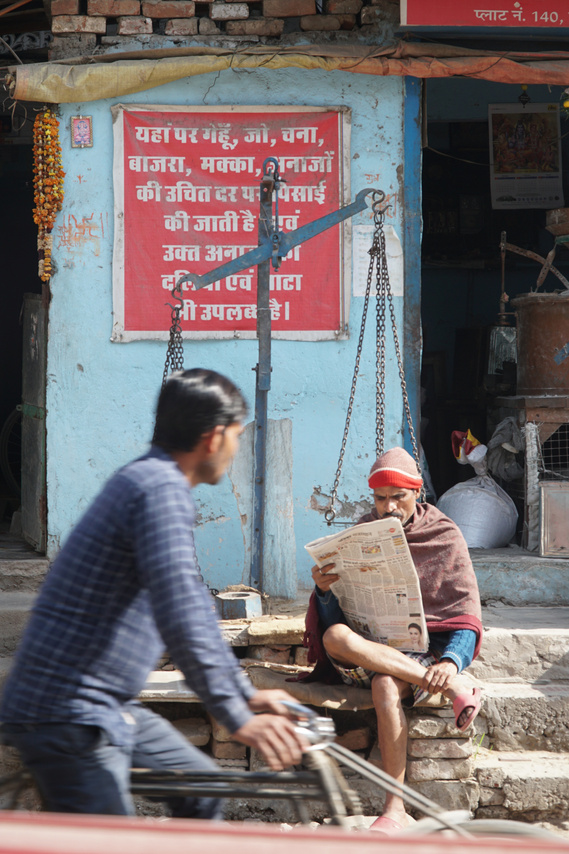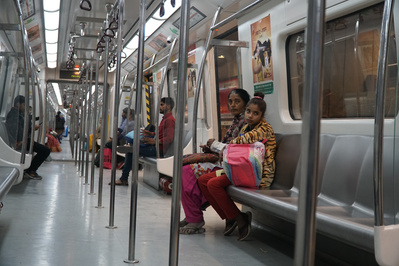Jaipur
January 10-12
City in Context
Jaipur is the capital of the Indian state of Rajasthan, literally meaning “Land of Kings.” Jaipur is the crown jewel of Rajasthan, serving as its capital. The city is the 10th largest city in India, as well as one of its the fastest growing cities. The population of Jaipur was 3.1 million in 2011, and it is projected to reach 8.1 million by 2031. The city has been successful in realizing fast-paced industrial and commercial development, with the side effect of a steep rise in travel demand. The city’s public transport infrastructure has had trouble keeping up in terms of capacity and service. With the growing economy, more people are shifting to private modes, aggravating congestion and pollution. What’s more, the modal share for public transport in Jaipur was 19% in 2017—one of the lowest in cities with more than 3 million inhabitants in India. How do people get around the "Pink City"?
The existing public transport system in Jaipur consists of city buses operated by Jaipur City Transport Services and minibuses operated by private operators. Other transport modes such as taxis and auto rickshaws are also prevalent. Jaipur City Transport Services operates afleet of 400 buses. The existing city buses operate on fifteen primary routes spread across the city, with a high concentration around the core area. The minibus fleet of about 1,900 operates on 28 routes. The problem with the bus service is that they are mixed with traffic and often operate at "crush" capacity. Only about 30 buses are available per 100,000 population. According to the World Bank, cities for aim between 50 to 120 buses per 100,000 people (source).
To tackle this issue, the Jaipur Development Corporation has sought to improve Jaipur's public transport system to accommodate the growth of population and consequent travel demand. Specifically, this will see the creation of high capacity mass transit (MRTS) corridors along the city trunk routes in North-South, South-West and Western directions. Capacity enhancements to the existing regional railway system by creating new suburban railway stations along the regional rail would augment the public transit. "Transit First" is therefore considered as the guiding principle in the continuing development of Jaipur.
Jaipur Metro Line 1 Development - The Cornerstone of Jaipur's Comprehensive Mobility Plan
Several initiatives have been undertaken by state government agencies responsible for urban transport in recent years to address the inadequate public transport capacity, availability, and increasing congestion on the road network in Jaipur. In 2009, Jaipur Development Authority developed the Comprehensive Mobility Plan, seeking to provide an overall transport plan up to 2031, that emphasizes the preeminence of public transport for movement of people, not just vehicles; and integrating land use with transport networks. The plan prioritized mobility corridors, which can maximize throughput of people, focusing on mass transport rather than vehicular traffic;and identified solutions including bus fleet augmentation, a bus rapid transit system, and a high capacity rail-based system.
In January 2010, Jaipur Metro Rail Corporation (JMRC) was established as a special purpose vehicle (SPV) to implement the metro lines along the city’s two main arterial corridors—Line 1, 12 kilometers, from Man Sarovar to Badi Chopar on the east–west corridor; and Line 2, 23 km, from Ambabadi to Durgapura on the north–south corridor. These lines are mainly elevated along the major arterial roads and underground beneath the city’s busy central zone. Line 1 is being implemented in phases: Phase A for the 9.7 km elevated portion from Mansarovar to Chandpole, and Phase B for the 2.3 km underground portion from Chandpole to Badi Chopar. Line 1-Phase A is estimated to cost about $400 million, and is being financed entirely by the Government of India and the state government. Line 1-Phase B is to be financed from the proposed Asian Development Bank (ADB) loan. Line 1-Phase B is within the central business district area, expected to handle 60% of trips generated along the Line 1 east–west corridor, and is critical to ensuring the overall impact is optimized and benefits are reaped in a timely manner. While I was in Jaipur, Line 1B was under construction, and was running a bit behind schedule due to the discovery of two ancient tanks which were buried right in the alignment path. Line 2 is expected to be commissioned in 2026 (source).
Click here to read Comprehensive Mobility Plan for Jaipur, prepared by EGIS Rail, a French consultancy firm. The report details the strengths, weaknesses, opportunities and threats to mobility in Jaipur as well as implementation of MRTS.
Parting Thoughts
Visiting Jaipur was important to see what happens when public transport is not sufficiently utilized. It has been heartening to see firsthand the efforts Jaipur is taking to address the rapid proliferation of private mobility. Expansion and development of the metro is the backbone on which Jaipur can continue rapid urban growth. Expansion of the bus fleet and the BRTS system will be important to serve as feeder routes to metro lines. These steps align with India's National Urban Renewal Mission, which seeks to bring about comprehensive improvements in urban infrastructure, among other things, to provide for easy and sustainable flow of people to support the required level of economic activity.






























